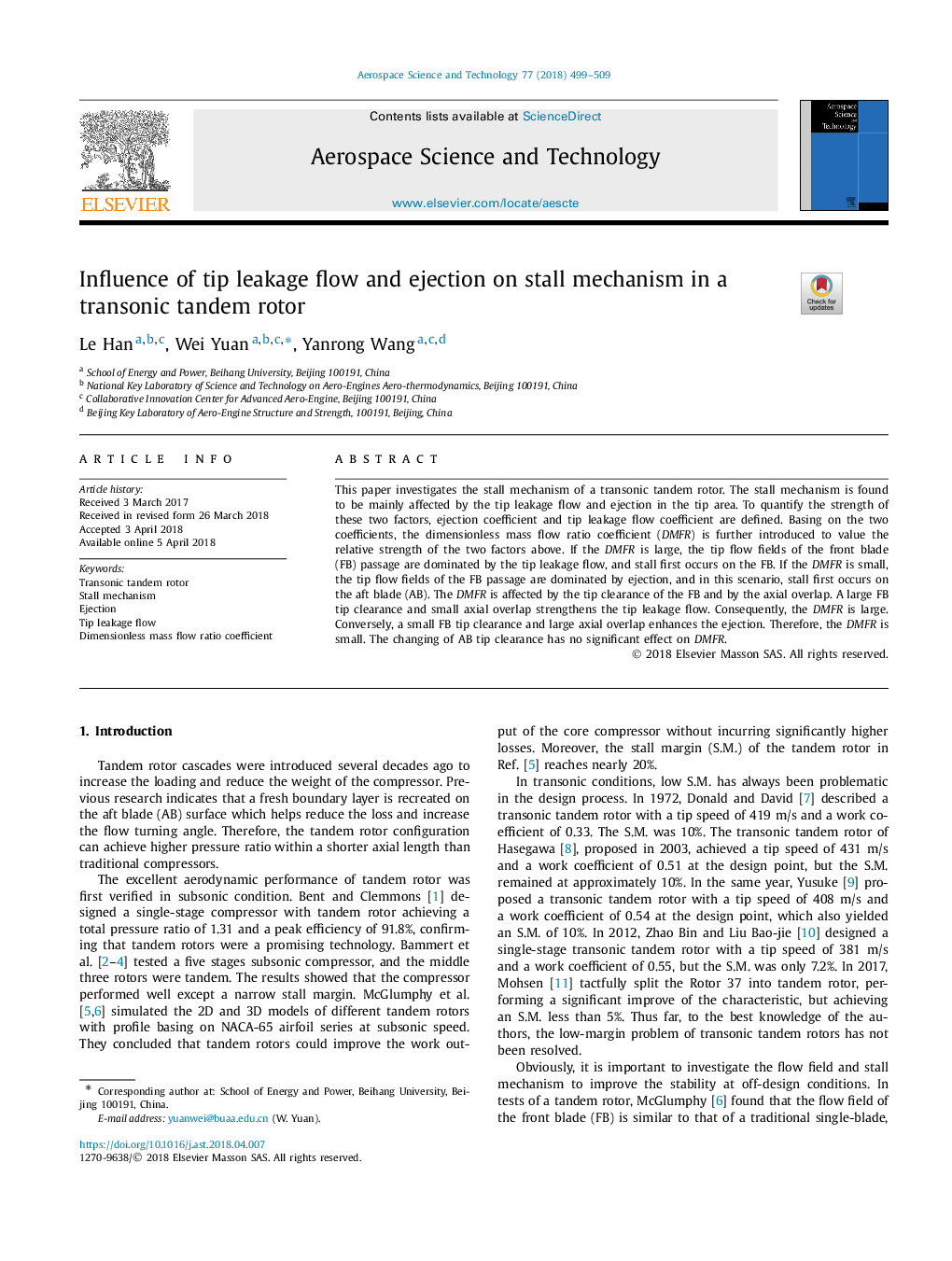| Article ID | Journal | Published Year | Pages | File Type |
|---|---|---|---|---|
| 8057713 | Aerospace Science and Technology | 2018 | 11 Pages |
Abstract
This paper investigates the stall mechanism of a transonic tandem rotor. The stall mechanism is found to be mainly affected by the tip leakage flow and ejection in the tip area. To quantify the strength of these two factors, ejection coefficient and tip leakage flow coefficient are defined. Basing on the two coefficients, the dimensionless mass flow ratio coefficient (DMFR) is further introduced to value the relative strength of the two factors above. If the DMFR is large, the tip flow fields of the front blade (FB) passage are dominated by the tip leakage flow, and stall first occurs on the FB. If the DMFR is small, the tip flow fields of the FB passage are dominated by ejection, and in this scenario, stall first occurs on the aft blade (AB). The DMFR is affected by the tip clearance of the FB and by the axial overlap. A large FB tip clearance and small axial overlap strengthens the tip leakage flow. Consequently, the DMFR is large. Conversely, a small FB tip clearance and large axial overlap enhances the ejection. Therefore, the DMFR is small. The changing of AB tip clearance has no significant effect on DMFR.
Related Topics
Physical Sciences and Engineering
Engineering
Aerospace Engineering
Authors
Le Han, Wei Yuan, Yanrong Wang,
